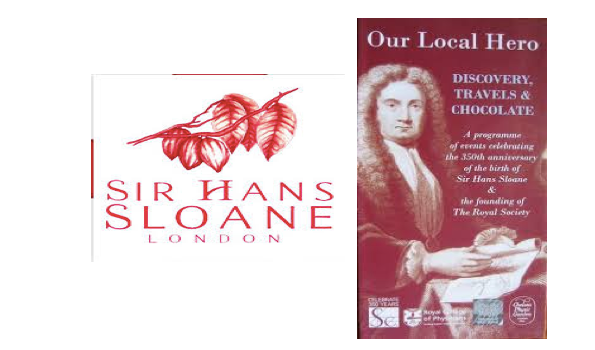[Originally published as part of my Column “Green Cardamoms “ in Shillong Times, Canvas, page 3].
Drinking Chocolate and the British Museum
Author: Gaurangi Maitra

photo credits: www.yelp.co.uk & www.pinterest.com
Memory tags: Fascinated by the connection between drinking chocolate and the British Museum
Dear Readers,
After a long break the Green Cardamom Trobairitz is back on the pages of Shillong Times. She is spell bound by interconnections and juxtapositions of science with history, geography, commerce, language, fine arts, technology, communication, in short, the whole fabric of human civilization. It is only appropriate to open a new edition of Green Cardamoms on a sweet note. This new edition of the green cardamoms brings you stories that will become part of the Trobairitz and History of Science. Today, the Trobairitz takes you to England and Jamaica of the 18th century where two seemingly unrelated things-- drinking chocolate and the British Museum are related by a single individual.
When the temperatures drop and mists curl around the pines, a large mug of hot sweet, milky drinking chocolate is difficult to beat. Before there were coffee houses, there were chocolate houses in late 17th century London. The hot chocolate was a luxury, compounded with two exotic imports - spices and cocoa which were sweetened with sugar, but drunk without milk. That addition would have to wait till Hans Sloane returned to London from Jamaica in 1689.
The 27 year old Hans Sloane had travelled to Jamaica as the personal physician to new the Governor in 1687.While in the West Indies, he explored its many islands including St. Kitts and Barbados, collected loads of exotic plants, animals and curios. We are also told he was unable to drink the local beverage of cocoa mixed with water .This was so distasteful to Hans Sloane, that he asked for milk to be mixed to make it less bitter and more palatable. And out of distaste for a local custom was born the custom of drinking chocolate with milk. When the Governor died after one year in Jamaica, our young physician came back to London. The post Jamaica phase is indeed an enlightening combination of academics and commerce.
Hans the botanist recorded his Jamaica bounty in three books, and Hans the physician marketed his recipe for drinking chocolate initially through various apothecaries for his own patients to cure ailments! The books and collections made him famous in the scientific community. He would consolidate his fortune by making well calculated acquisitions from many famous collectors. As his collections grew, he would buy a manor in Chelsea set on extensive gardens and house them after his retirement. Shifting from only medicinal use, Sloane marketed his drinking chocolate as a beverage base through Nicholas Sander, William White and allowed Cadbury to use the recipe for over three decades.
On the academic front, he would first become the secretary of the Royal Society editing its Philosophical Transactions for twenty years and then succeed Sir Isaac Newton as its president. He was friends with John Ray, Robert Boyle, Linnaeus and was physician to three monarchs- Queen Anne, King George I and King George II. Not unnaturally, he would be made Sir Hans Sloane for his contributions.
London abounds with streets named after Sir Hans. The websites of the Sir Hans Sloane Hot Chocolate, the Royal Society, British Museum and Natural History Museum of London are full interesting information, some of which has been used here. Infact, www.nndb.com gives ‘Milk chocolates and British Museum’ as his executive summary! This is a little inaccurate as it was drinking chocolate, that was his contribution. He was a famous doctor, ardent botanist, and shrewd collector with a very keen eye for good investments. So, before he could sing his final Jamaica Farewell, he provided for two daughters by giving his entire collection to the nation in 1753 for a payment of £20,000. It was passed by Parliament and this collection together with the collections of George II became the British Museum in 1759. The gardens around his Chelsea Manor became the famous Chelsea Physic Gardens in which a future iconic President of the Royal Society, Joseph Banks would find inspiration.
Like every storyteller, this Trobairitz is fascinated by juxtapositions and interconnections: the British Museum set up two years after the Battle of Plassey, in 1757, would become the role model for the Indian Museum in Calcutta. Set up in 1814 by Dr. Nathaniel Wallich, another physician botanist, who also helped set up the Calcutta Botanical Gardens. And, who you have guessed that it all begin in Jamaica and a cup of chocolate? The Trobairitz is off to have a mug of hot drinking chocolate and seek inspiration from theobroma for her next story.
Main resources:
- Encyclopedia Britannica
- Wikipedia
- www.sloaneshotchocolate.com
- www.nndb.com
- www.britishmuseum.org
- https://royalsociety.org
